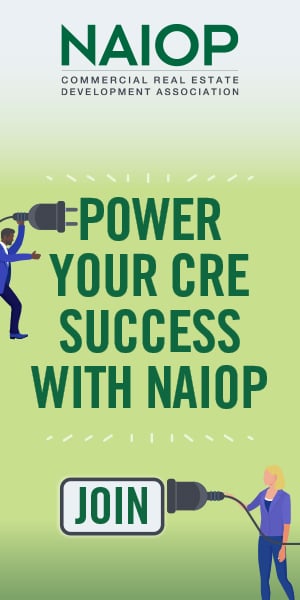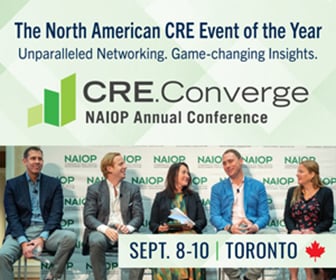Diversity & Inclusion Roundtable Delves Into 'Constructive Conflict'

Annual industry gathering examines best practices for building a workforce that reflects a rapidly changing population.
More than 40 human resources executives from 27 CRE companies around the U.S. and Canada gathered in Atlanta, Georgia, in November for the third annual Commercial Real Estate Diversity & Inclusion Roundtable.
First launched in 2016, the one-day summit targets industry professionals who have initiatives in their firms to create a more diverse pipeline of talent for jobs in commercial real estate. Designed by industry HR professionals, the roundtable provides a forum for frank and open dialogue about how to increase diversity.
Through an interactive program that features speakers, networking and small-group breakout discussions, participants examined how to build an inclusive work culture and accelerate their diversity and inclusion programs with effective practices.
Building an Inclusive Model of Leadership
Corporate leaders can model and influence the behavior they want to see in their companies. The roundtable explored the impact of a corporate culture that empowers leaders to embrace differences both in perspectives and experiences.
Eva Spurgin of Duke Realty led the first discussion, which focused on Margaret Heffernan’s TED Talk, “Dare to Disagree.” Heffernan, who has been the CEO of five companies, says organizations should instill an environment of “constructive conflict” that encourages individuals to provoke discussion through disagreement.
After Spurgin’s presentation, small groups broke off to explore ways to encourage individuals to speak up and to get organizations to value their ideas, even if they are different.
Here are some of the key takeaways generated during the discussions:
- Find thinking partners who are not “echo chambers.”
- Seek disproving information to test your ideas.
- Identify people who are different from you and find ways to engage them.
- Be prepared to change your mind.
- If you like the culture that you cultivate, it is equally important to take personal responsibility to make sure the culture continues.
- Openness alone can’t drive change; leaders must act to model the change they want to see.
Keynote speaker Joe Gerstandt followed with a presentation entitled “Inclusion by Design.” It addressed one of the biggest corporate challenges: Organizations that have brought diversity into the workplace but haven’t made it safe for individuals to be different on the job.
“You can have a diverse team, but it might not be inclusive when they still cannot speak up with their different points of view,” he said.
Gerstandt stressed the impact of diversity on team performance and the value of making an organizational commitment to craft and deliver a more inclusive employee experience.
“Inclusion is the first product of real leadership today,” he said.
Gerstandt further explained that “presenting a business case isn’t enough; you have to have a personal narrative on why diversity and inclusion is important to drive change. Culture doesn’t change until people start behaving in different ways.”
Gerstandt added that if diversity and inclusion matters, it should be one of the things that drives your hiring and promotion decisions, not just high performance.
“We need to be able to get rid of high performers who aren’t willing to align with your cultural values of diversity and inclusion,” he said.
Gerstandt posed the following key questions for consideration:
- What am I doing to be inclusive? (Do I understand that it takes action and not just saying that “I am inclusive”?)
- How psychologically safe are we?
- What am I willing to do to increase my comfort in having conversations about diversity?
- What am I doing to make sure my team members feel welcome?
- Am I taking personal ownership for diversity and inclusion outcomes?
- What do I do to bring diversity and inclusion into my network?
How to Accelerate Diversity and Inclusion Programs
Organizations across the commercial real estate industry are working on best practices to engage and recruit diverse talent to commercial real estate. During the roundtable, groups discussed ways to overcome stereotypes and how the industry can address three areas where unconscious bias and prototype bias (the tendency to choose the same people for certain assignments) can be found in the workplace: talent acquisition, development opportunities and advancement.
Several companies and non-profit organizations spotlighted their initiatives to attract diverse talent to the industry:
- Brandywine Realty Trust’s community interface initiative supports multiple neighborhood engagement projects such as the Construction Apprentice Preparatory Program (CAPP), which trains students for careers in the building trades.
- CBRE analyzes demographics and cultivates relationships with communities of color, educates them about the company, and actively recruits at historically black colleges and universities.
- Hines’ on-campus university recruitment program explains and exposes commercial real estate to college students. The program targets schools with diversity programs and students with less knowledge of the industry.
- SITE Centers’ Women of Influence provides a mentoring program to connect employees with company leaders and strategize how to get more women and people of color into higher-level positions.
- CREW Network’s Careers program builds industry awareness among middle and high school students in inner-city schools, funds scholarships, and finds paid internships for young members.
- Project REAP is a non-profit organization located in nine cities that’s focused on connecting adult minority talent to career opportunities in the industry and growing a diverse talent pool through a 10-week educational program.
- NAIOP and three NAIOP chapters, along with the Real Estate Executive Council, has offered summer CRE Immersion Programs on university campuses taught by real estate faculty and industry professionals for gifted and talented minority high school students to introduce them to commercial real estate.
Seven organizations partnered in sponsoring the roundtable: Brixmor Property Group; Duke Realty; HFF; Hines; NAIOP; Prologis and SITE Centers. The program was developed in collaboration with Project REAP.
Diana Tucker, CAE, was NAIOP’s vice president for membership and chapter relations.
We Can Do BetterA 2013 study from the Commercial Real Estate Diversity Report found that white men, who make up 31 percent of the U.S. population, held the majority of executive (77.6 percent), managerial (68.9 percent), professional (58.5 percent) and technical (59.7 percent) jobs in the industry. For more information, check out NAIOP’s Diversity Resource Center online. |




